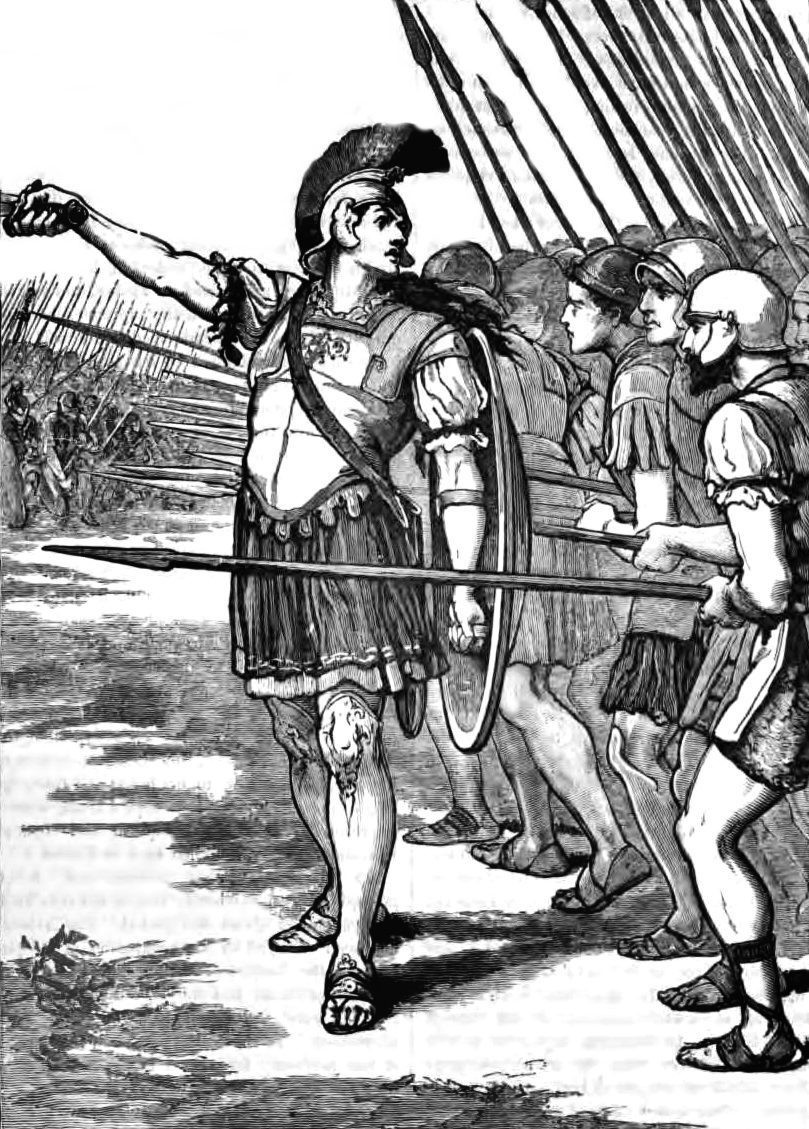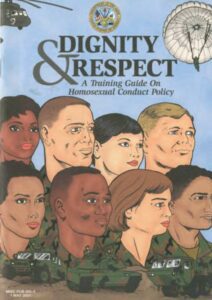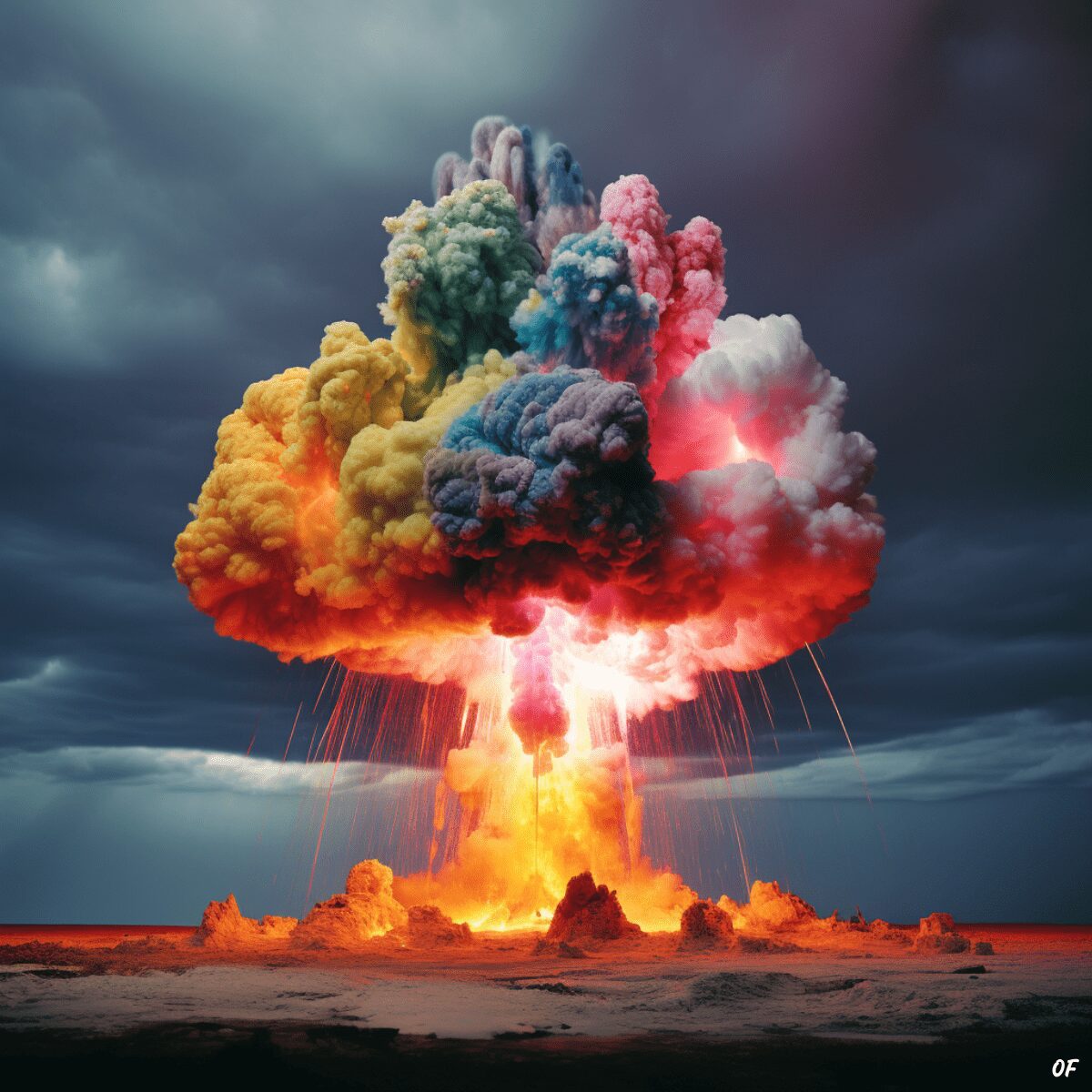In 2002, the Sunshine Project, a former NGO that tracked the development and use of chemical and biological weapons around the world, obtained a three-page document from the Wright Laboratory in Ohio (now part of the US Air Force Research Laboratory) through a Freedom of Information Act (FOIA) request.
The document, dated June 1, 1994 and titled “Harassing, Annoying, and ‘Bad Guy’ Identifying Chemicals,” lists several potential non-lethal weapons for the United States military to use against enemy soldiers. These weapons, however, are not your typical tear gas or stun grenades; they are not even your James Bondian poisoned umbrellas or heart attack guns. Rather, they are more like something out of a Monty Python sketch.
The most infamous weapon in the document is what the media has dubbed the “gay bomb,” which gained renewed attention after comedian Kurt Metzger mentioned it on the Joe Rogan Experience podcast in November 2022. But this is only one of the many weird ideas Air Force’s Wright Laboratory came up with in 1994—indeed, their whole proposal is so absurd that it warrants a more detailed summary.
“Harassing, Annoying, and ‘Bad Guy’ Identifying Chemicals”
The document’s general recommendation is that the Air Force puts its money—and brains—into researching “chemicals that can be sprayed onto enemy positions or onto infiltration routes used by enemy forces.” Three classes of such chemical weapons are subsequently proposed.
Category #1: “Oh, no, not the bees! Not the bees!”
As outlined in the proposal, Category #1 chemicals encompass “chemicals that attract annoying creatures to the enemy position and make the creatures aggressive and annoying.”
Furthermore, the document expresses the goal of discovering or creating a chemical agent—specifically referred to as a “a ‘sting me/attack me’ chemical”—capable of inducing bee attacks, and “especially effective for infiltration routes.”
A scene straight out of Mel Gibson’s Apocalypto!
Category #2: “Do you have a mint? Perhaps some Binaca?”
Category #2, labeled as “Chemicals that create lasting but non-lethal markings on personnel,” is the most diverse among the three categories. It focuses on using chemicals to mark enemy combatants in a way that makes it “impossible for them to blend with the local population.”
According to the document, these markings “should also be annoying to the exposed individuals” and remain “easily identifiable (by smell or appearance) weeks later.” Only the US military would possess the antidote, compelling enemy troops to seek help from them.
An extraordinary example within this category is the proposal to develop a mildly toxic—and extremely smelly—substance that induces “severe and lasting halitosis” in individuals exposed to even small quantities of it! Bad breath—fighting off terrorists ever since 1994.
Category #3: “Making them totally gay-bones for each other”
The most notorious—and widely quoted—paragraph in the 1994 three-page proposal pertains to Category #3 chemicals, which are defined as:
Chemicals that affect human behavior so that discipline and morale in enemy units is adversely effected [sic]. One distasteful but completely non-lethal example would be strong aphrodisiacs, especially if the chemical caused homosexual behavior.
In the words of Edward Hammond of the Sunshine Project, who first reported on all this, “the Ohio Air Force Lab actually proposed that a bomb be developed that contained a chemical that would cause enemy soldiers to become gay, and to have their units break down because all their soldiers became irresistibly attractive to one another.”
How times change! It’s not only us today who scoff at this idea—the Ancient Greeks would have disagreed with it too. Some of them might have gone so far as to suggest that the plan could have, well, backfired.
Homosexuality in the militaries of Ancient Greece

Back in 1994, the US was fresh off the Cold War and the “Don’t Ask, Don’t Tell” policy in the military, which limited inquiries about service members’ sexual orientation and allowed homosexuals to serve if they kept it secret.
This policy came as a compromise after President Bill Clinton’s unsuccessful attempt to lift a longstanding ban on homosexuality, which had been considered “incompatible with military service” since 1982. Due to this ban, around 17,000 individuals were discharged for being homosexual in the 1980s.

By contrast, the mighty Sacred Band of Thebes, famous for their victory over the Spartans at the crucial Battle of Leuctra in 371 BC, was an elite military unit consisting of exactly 150 pairs of devoted male lovers. These warriors were chosen not only for their exceptional individual bravery, but also for their unwavering dedication to one another, making them a fearsome and cohesive fighting force. Under the leadership of Pelopidas, they played a significant role in shifting power from Sparta to Thebes in Ancient Greek history.
Interestingly, the achievements of the Sacred Band align closely with the concepts of homosexual love and camaraderie discussed in Plato’s Symposium, a philosophical dialogue from around 385-370 BC. In the dialogue, one of the participants, Phaedrus, eerily foresees the existence of such a military unit.
…If there were only some way of contriving that a state or an army should be made up of lovers and their loves, they would be the very best governors of their own city, abstaining from all dishonor, and emulating one another in honor; and when fighting at each other’s side, although a mere handful, they would overcome the world! For what lover would not choose rather to be seen by all mankind than by his beloved, either when abandoning his post or throwing away his arms? He would be ready to die a thousand deaths rather than endure this. Or who would desert his beloved or fail him in the hour of danger? The veriest coward would become an inspired hero, equal to the bravest, at such a time; Love would inspire him.
The aftermath of the “gay bomb” proposal

In third-century Ancient Greece, some philosophers—and at least one government—strongly believed that homosexual love could inspire bravery and selflessness in the military. In 1994, however, the United States saw an Air Force lab request $7.5 million to create a (morale-crashing) bomb which was supposed to spray human pheromones over enemy soldiers, turning them into homosexuals. So much for the advancements of democracy. And reason.
Following its revelation in 2002, the Pentagon acknowledged the Wright Lab proposal with a diplomatic response, affirming, “The Department of Defense is committed to identifying, researching, and developing non-lethal weapons that will support our servicemen and women.” They did, however, add that “none of the systems described in that proposal have been developed,” and that they didn’t even consider them for much too long.
Hammond begs to differ. “The truth of the matter,” he said in 2002, “is it would have never come to my attention if it was dismissed at the time it was proposed. In fact, the Pentagon has used it repeatedly and subsequently in an effort to promote non-lethal weapons, and in fact they submitted it to the highest scientific review body in the country for them to consider.” Indeed, the proposal was originally found on a CD-ROM produced by the US military in 2000, and delivered to the National Academy of Sciences in 2002!
The story ends five years later, when the US military—more than deservedly!—won the not-so-eminent 2007 Ig Nobel Prize, a humorous counterpart to the actual Nobel Prize, awarded by the appropriately named Journal the Annals of Improbable Research for research achievements “that make people laugh—then think.” It’s a straight line from there to a subplot in the Season 2 30 Rock episode “Cooter”. OK, maybe not that straight.


